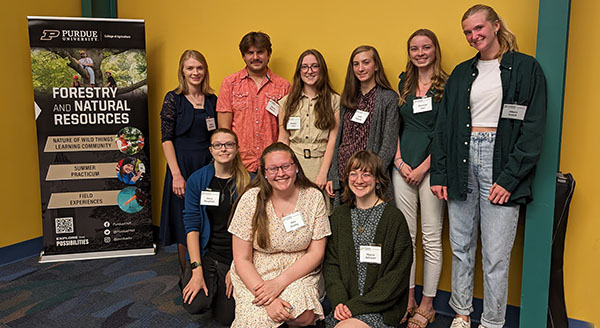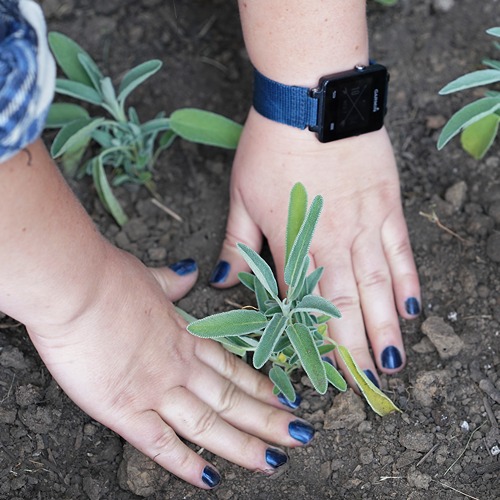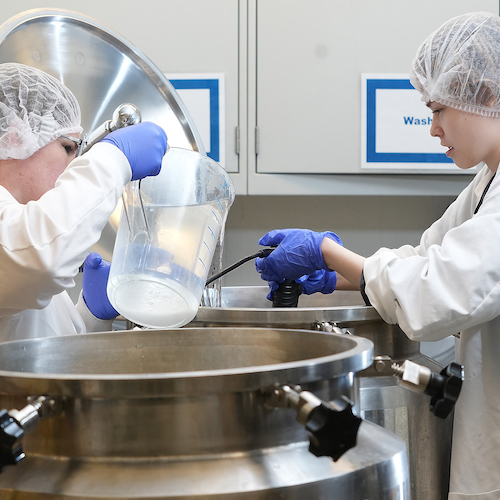A passionate instructor, a hands-on learning environment and the feeling of connection to a larger research community are just a few elements of Dr. Barny Dunning’s Advanced Ornithology class.
The class, which currently boasts eight students, is taught every other year and has typically enrolled around 20 students. The course is a combination of a discussion and laboratory-based course, which looks at new information regarding the biology, conservation and management of birds. North American species are the main focus of the course, but students read papers on avian research from around the world.
“A goal of mine is to show students how avian research is done, i.e. demonstrating techniques, as well as exposing the students to a wide variety of research topics that current ornithologists are working on,” Dunning said.
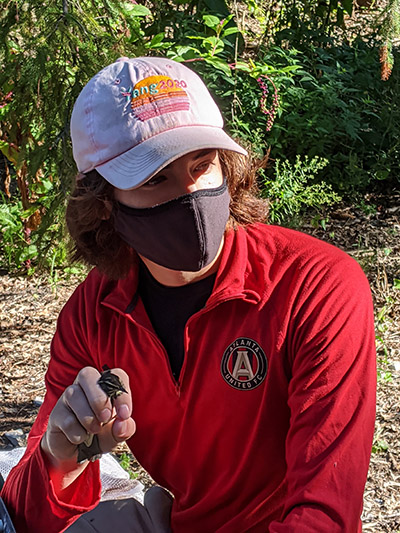
One of the unique aspects of the class is how the students shape the classroom topics. At the very beginning of the semester, Dunning polls the students about their specific interests and he then fine-tunes the schedule of classes so that the course covers those topics of particular interest to that group of students.
For instance, this fall, two students expressed an interest in the issue of vagrancy, i.e. why rare birds show up in the places that they do, so Dunning has devoted more class sessions to that topic than he would in a normal year.
“Having a smaller group of people who are interested in focusing on ornithology provides for a lot more of an opportunity to have a conversation about things you are lecturing about,” senior wildlife major Ashley McDaniel said. “He might open with a short lecture, and all it really takes is for him to ask one or two questions and we can have a really thorough conversation about it. Instead of just listening to somebody talk, you have more time and opportunities to talk with them about the things that you want to and ask the questions that you want as you are trying to learn instead of just listening. Passion is also huge with teaching, so it helps when you know that he really cares and also is very knowledge about what he is talking about.”
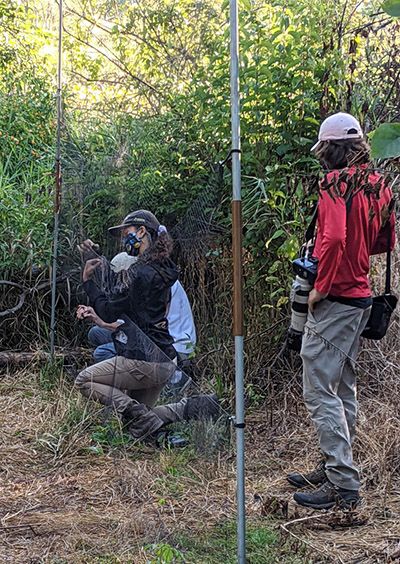
One standout aspect of the class is the hands-on time with birds, including banding sessions, where students learn to set up the mist nets, in which birds are caught for banding, as well as proper removal of various species and how to take measurements such as weight, beak length and even look for signs of body fat and molting.
“In most classes, you aren’t able to leave the classroom to go outside and be able to do things like this (bird banding), so it is a really unique aspect of this class,” senior natural resources and environmental sciences major Cody Barron said. “You get a hands-on experience and being able to do that is better for your learning experience overall.”
The bird watching and bird banding sessions in the class also leave students feeling like part of a bigger community of researchers nationwide.
“If I weren’t taking ornithology and practicing birding, 2 million birds flying over (in a fall migration) would just be another day, but taking this class 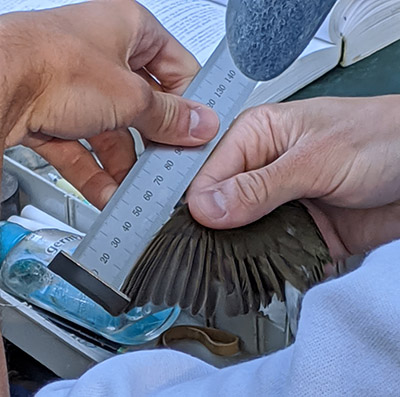 and seeing how passionate Dr. Dunning is about birds makes you want to go out and see them,” senior wildlife major Reagan Muinzer said. “Just knowing that as we are banding we are getting to handle all of these birds that are flying across the world is really cool. We actually get to get our hands on the birds and take measurements that are going someplace worthwhile (the national bird database). People are going to be looking into this to study birds across the United States, so I think we are definitely making an impact in that way.”
and seeing how passionate Dr. Dunning is about birds makes you want to go out and see them,” senior wildlife major Reagan Muinzer said. “Just knowing that as we are banding we are getting to handle all of these birds that are flying across the world is really cool. We actually get to get our hands on the birds and take measurements that are going someplace worthwhile (the national bird database). People are going to be looking into this to study birds across the United States, so I think we are definitely making an impact in that way.”
 and seeing how passionate Dr. Dunning is about birds makes you want to go out and see them,” senior wildlife major Reagan Muinzer said. “Just knowing that as we are banding we are getting to handle all of these birds that are flying across the world is really cool. We actually get to get our hands on the birds and take measurements that are going someplace worthwhile (the national bird database). People are going to be looking into this to study birds across the United States, so I think we are definitely making an impact in that way.”
and seeing how passionate Dr. Dunning is about birds makes you want to go out and see them,” senior wildlife major Reagan Muinzer said. “Just knowing that as we are banding we are getting to handle all of these birds that are flying across the world is really cool. We actually get to get our hands on the birds and take measurements that are going someplace worthwhile (the national bird database). People are going to be looking into this to study birds across the United States, so I think we are definitely making an impact in that way.”In addition to standard bird research techniques such as banding, students also learn from current researchers about what they are doing in the field. PhD graduate Brandon Quinby came to one class and showed the students how to collect blood samples. Another class period saw Dr. Kristen Bellisario demonstrate how she is using avian song characteristics (in the form of audio files) to identify individuals of a declining songbird of Florida pine forests, the Bachman’s sparrow.

Another resource available to Dunning and the class is the extensive FNR Specimen Collection located on campus. Dunning brought out a bunch of mashed and difficult to identify specimens, which the class then compared to the thousands available in the department collection to help identify them. This served to show students how a research collection can be utilized in ornithology work as well as improve their species identification skills.
Students are encouraged to use their knowledge and critical thinking skills to analyze new research as well. For instance, Dunning had students read a core set of three or four papers which announced that the ivory-billed woodpeckers were not extinct and still existed in Arkansas. In another class, students read two papers which formally described two new species, never before described scientifically. In both cases, the students then discussed whether they believed the evidence presented. Dunning then reveals the results of subsequent studies, including, in the latter case, those that have shown that one of the “new species” was not valid, while the other has been generally accepted. Students are often surprised by this news as they have typically predicted the opposite.
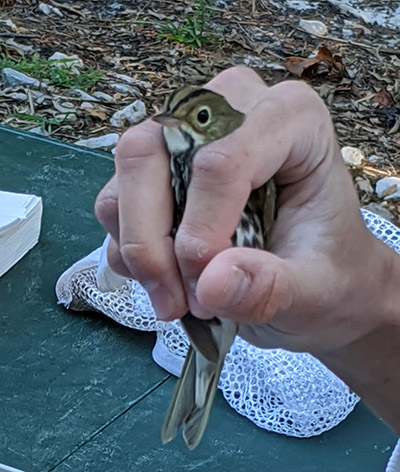
The advanced ornithology class has evolved over the years, and even more so in the last year as students have began to attend classroom sessions via Zoom due to COVID-19.
Back in the late 1990s, Dunning taught a standard ornithology class featuring mostly lectures to a class of mostly senior students. When the wildlife curriculum changed in 1999, a sophomore level vertebrate ecology series was set up to prepare wildlife students for attending practicum.
This revision eliminated the senior level ornithology, mammalogy and other similar classes. However, Dunning and others noticed that there was still a need to provide students more advanced information on birds, mammals, etc., than they could provide in a half semester sophomore class. This marked the creation of advanced ornithology, an elective class allowing instructors to focus on how to functionally perform each kind of science while working with a smaller number of students who were keenly interested in the subject.
Whatever the format, it is clear that Dunning will continue to share his passion for ornithology for FNR students who wish to learn more about birds, research and conservation, and he will continue to evolve to better serve those who choose to take the course.
